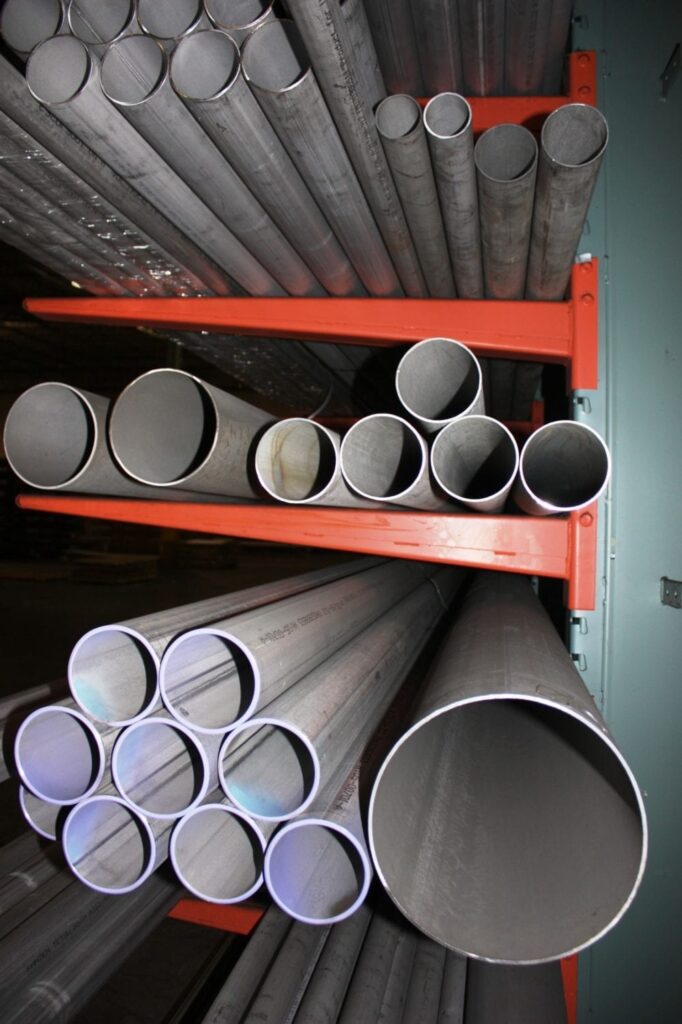Stainless Steel Pipe Supplier
Stainless and Alloy pipes are used in many applications. Ameralloy Steel has an extensive range of stainless and alloy Pipes available. Some common industries are food, dairy, petrol, chemical, pharmaceutical, construction, and medical.
Various Piping Options Available

- Seamless Pipe When the shell is hollowed out by drawing the billet over a piercing rod, seamless pipework is generated. Because the metal never loses its integrity and the hull is never diminished, piercing the metal through the center eliminates any structural deficiencies.
- A Welded Pipe Rolled sheets are welded together to create welded pipes. There are many types of welding technology that make the weld virtually invisible. Most tubes are laser fused or bead-reduced.
Comparing the Two Pipes with no seams may be preferable to corrosive material-laden projects. However, compared to stainless steel tubing, the welding on welded pipes may be more susceptible to corrosive erosion.
Stainless Steel Pipes
Stainless steel pipes that are resistant to corrosion include the following:
• Pressure pipes.

Ferritic or austenitic stainless steel is the most common type of stainless steel used in pressure pipes. They have large diameters and can be welded or seamless to withstand high temperatures.
• Hydraulic line pipes.
These pipes are typically smaller than those used for fuel and hydraulic systems. Austenitic steel is commonly used because of its high tensile strength.
• Sanitary pipes.
Pipes used in the culinary, medical, pharmaceutical, and water treatment industries must meet strict hygienic requirements. Sanitary stainless-steel pipes are simple to maintain and do not rust.
• Mechanical pipes.
To make bearings and other hollow pieces, you need these pipes.
Distinct types of stainless-steel pipes and tubes are available, each well-suited for a particular use. Pipes offer some benefits and drawbacks over tubes.
• Pros.
Pipes are more cost-effective than tubes and can be produced more rapidly. Standardized pipe sizes make it easy to identify the proper fit for a project.
• Cons.
Fluid flow is agitated by the abrupt 45° or 90° bends in most pipe junctions. On the other hand, Pipes rely on low-tech joining and sealing methods, which increases the likelihood of leakage.
Stainless steel pipes have a wide range of uses, including the following:
- Appliances
- Furniture
- Food processing is a significant component of the economy.
- The use of grab bars
- Handrails
- Equipment for treating patients with medical conditions
- Equipment in the field of pharmaceuticals
- Kitchen utensils and supplies
Comparing stainless steel pipes to tubes:
Pipes are not regular sizes. It’s common to use the phrases “pipes” and “tubes” interchangeably because they are similar. Pipes and tubes, on the other hand, have significant differences:
It is essential to consider the Pipe’s capacity and internal diameter while determining pipe sizing. The nominal outside diameter sizing system is used to measure standard pipe diameters.
To ensure the structural integrity of the tube, the diameter of the tube is measured in terms of its actual diameter rather than its nominal diameter. Hypodermic tubing, for example, necessitates minimal and accurate diameters.
Not sure what you are looking for? Contact Ameralloy Steel an ISO 9001 certified supplier that specializes in finding hard-to-find Stainless and Alloys. Along with our proprietary grades Amera-Braze, Durelloy, and Dura-Krome. Our knowledgeable sales team will help you find what you are looking for. With many shapes, sizes, and material grades available, we can help you find what you are looking for. The most common items stocked are Tube, Pipe, Sheet, Plate, Hex bar, Square bar, Round bar, Threaded bar, Pump Shaft, and Millimeter sizes. We offer added fabrication services. Contact us now for the current price and delivery.
